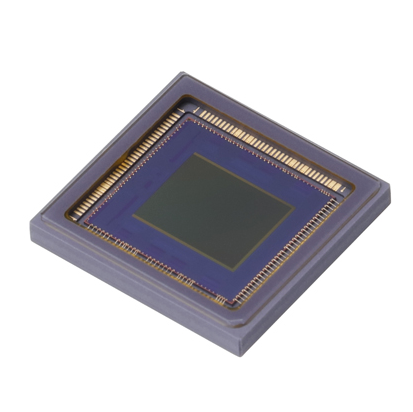Canon Develops CMOS Global Shutter Sensor with Expanded Dynamic Range & Puts it in the C700

Interesting news from Canon this morning. A new development of a CMOS Global Shutter Sensor. Don’t get to excited because this is the first stage of the sensor and probably won’t be in a camera for at least a year but as you read the press release it states that they have also been able to get good dynamic range as well. An issue that exist in global shutter is the reduction of dynamic range compared to rolling shutters. It was only a matter of time when we would see this type of advancement and boy are we ready!
UPDATED Sept 1st
Today Canon surprises with the new C700 and has two sensor options. Yep the PL model has a global shutter. Strange move to announce the global shutter a day before the new C700 but wow does this camera look nice! Here is the scoop for now while I read up and make a new post. Very bold move by Canon with the new C700. It clearly is their top of the line Cinema EOS for high end productions and filmmaking at $29K it’s right up with the big boys.
The EOS C700 offers the option of two different sensor designs. The EOS C700 offers a 4.5K CMOS sensor with 15 stops of dynamic range. The standard sensor will be offered in both PL and EF mounts. The EF mount version of the camera features Dual Pixel CMOS AF Technology.
The EOS C700 GS PL features global shutter technology. Global shutter technology is helpful for sports, fast action, concerts and events where it eliminates “jello” and “flash band” artifacts.
The image on a global shutter sensor is captured simultaneously by every pixel on the sensor. Standard CMOS sensors capture the image by scanning the scene from top to bottom. Depending on the speed of the scan, the time delay between the scan of the first line and the last sometimes results in a “jello” effect where straight lines appear curved or wobble as the camera or subject moves. By capturing the entire image at once these artifacts are removed. The EOS C700 GS PL features 14 stops of dynamic range and does not offer Dual Pixel CMOS AF.

TOKYO, August 31, 2016—Canon Inc. today announced that it has developed a new CMOS sensor equipped with a global shutter function that, because it exposes all of the sensor’s pixels at the same time, enables the capture of distortion-free images even when shooting fast-moving objects. Employing a new signal-readout drive system and new pixel structure that significantly expands the full well capacity and reduces noise, the sensor contributes to high-image-quality video capture by making possible the realization of a wide dynamic range.
Distortion-free image capture when shooting fast-moving objects
Standard CMOS sensors make use of the rolling shutter method, which sequentially exposes the pixels one row at a time. Because rolling shutters can create slight discrepancies in signal-readout timing depending on the location of the pixel, images of fast-moving objects may appear distorted and flash photography may result in the occurrence of the flash band phenomenon, in which the upper and lower portions of images display different levels of brightness. Because Canon’s newly developed CMOS sensor employs a global shutter, when shooting such fast-moving objects as a rotating propeller or a speeding train, subjects are able to retain their proper form to create distortion-free images. Enabling the confirmation of object shapes with a high degree of accuracy, the sensor offers potential benefits in industrial applications, including as a sensor for use in inspection cameras.
Wide dynamic range realized through new proprietary drive method and pixel structure
When the newly developed CMOS sensor converts light into electrical signals and stores the signal charge in memory, the new drive system achieves a significant expansion in full well capacity. Also, because it employs a structure that efficiently captures light and each pixel incorporates an optimized internal configuration, the sensor makes possible increased sensitivity with reduced noise. The expanded full well capacity, realized through the sensor’s new drive system, and substantial reduction in noise, enabled by the new pixel structure, combine to deliver a wide dynamic range, facilitating the capture of high-image-quality, high-definition footage even when shooting scenes containing large variances in brightness.
Canon will explore various industrial and measurement applications for the newly developed CMOS sensor and consider deploying it in the field of video production for cinema production applications, TV dramas, commercials and more.
No info on resolutions in the press release or what type of frame rates it’s cable of either Stay tuned for the next chapter on Cinema EOS cameras.
Please signup for my newsletter! Follow me on Twitter @eriknaso and Facebook and also check out my Youtube Channel.
Thanks for coming by! Please help support my site by using the links on this page or bookmark these from my favorite retailers, B&H, Adorama, Zacuto, Amazon.com & Think Tank Photo Using the links cost you nothing extra, but it helps offset the cost of running my blog. Thanks again for coming by eriknaso.com!
Filed in: Canon • Canon Cinema EOS • Featured Post









